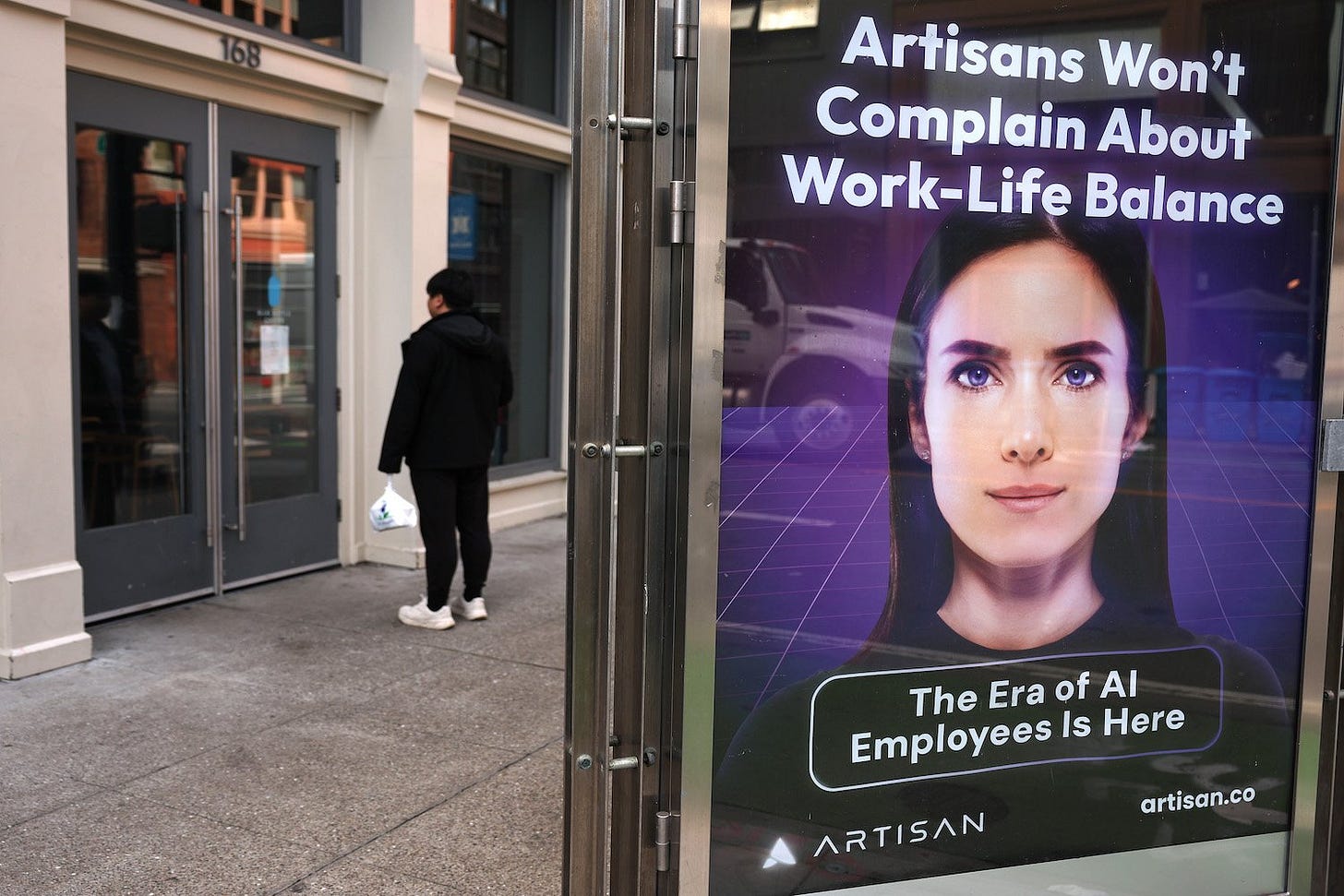I was in the office bathroom, just five minutes from my desk: — walk down the hall, pee, wash my hands, walk back. But that was enough to cause concern from my editor; if I wasn’t instantly reachable, all the time, the disapproval was palpable.
Eventually, I started scheduling out-of-office messages when I was away from my desk. On my commute. If I needed a walk or a stretch. I’d spell it out: Grabbing lunch, back at 1:10. I was still a reporter, which meant the work never really stopped. I took calls at night, filed stories on weekends. There was no off-switch. But somehow, that wasn’t enough.
The American workplace has changed since I first set foot in the newsroom in 1997. And not for the better.
We’re living in a time of deep mistrust and ambient anxiety. AI is part of it. According to a February 2025 Pew Research Center survey, 52 percent of U.S. workers are worried about AI’s impact on their jobs, and a full third believe it’ll result in fewer opportunities over time. It would be shortsighted to call this technophobia versus a reflection of how quickly the ground is shifting beneath our feet.
But it’s not just AI. It’s the iPhone as chaperone. We’re tethered to visibility now — monitored not just by algorithms, but often by our own devices. Supervisors track whether you’re at your keyboard. Showing up isn’t enough, if it ever has been: you have to prove your presence constantly, especially if you work remotely. Someone is taking attendance on those Zoom calls.
That pressure to be seen bleeds into every profession. For someone like me — once a writer, now a public-facing “brand” — it means lugging a tripod to the gym, filming everything, posting updates, staying camera-ready. Visibility used to be the territory of TV anchors or celebrities. Now it’s expected of anyone with a platform.
No wonder people are uneasy. The pressure to be constantly visible, polished, and performing is exhausting. And it’s not sustainable. (We writers who thought we’d be shielded from it on Substack–-surprise!--got hit with lives and reels).
it’s the expectation that you must be the product, too. Everyone has to be a content creator. In the past decade, followers have become necessary, universal currency.
The end of my newsroom career left a bitter taste. I loved journalism. But the culture shifted from collaboration to suspicion. From mentorship to micromanagement. What used to feel like a joyful mission started to feel like surveillance.
As others have pointed out, more AI and fewer workers is a recipe for disconnection. This week, I visited a studio to record the audiobook for LIFT (hitting shelves June 17), and I was so happy to see actual people in an office, eating lunch together. I told them how much I missed that.
A Pew survey found that 64 percent of U.S. adults believe AI will lead to fewer jobs. And contrary to what some optimists say, it’s not making work easier. A study by Upwork’s Research Institute revealed that 77 percent of employees using AI tools reported an increase in their workload — with nearly half unsure how to achieve the productivity gains expected by their employers. The result? Overwhelm and burnout.
But here’s the thing: humans need to step away. Not just for survival, but to produce better work.
Here’s what I do throughout the day — and how it helps me stay productive and focused:
🧠 Movement = Better Brain Power
I take a walk outside every day, usually around 11 or 12. I wear a weighted GORUCK backpack (with a 25-pound plate) and bring my dog. It’s a strength-based walk that kicks me in the glutes — literally. Walks have been shown to improve focus, memory, and problem-solving. A 2022 Scientific Reports study found that walking outdoors led to greater cognitive benefits than walking indoors.
😤 Exercise Lowers Stress
Then, around 4 p.m., I hit the weights. Strength training helps regulate cortisol (the stress hormone) and floods the body with feel-good endorphins. The American Psychological Association links regular movement to reduced anxiety and depression, especially in high-pressure environments.
🧘 Breaks Prevent Burnout
Our brains aren’t built for eight straight hours of focus. I’m a big believer in the Pomodoro Method (25 minutes on, 5 minutes off), which I learned through body-doubling sessions. Intentional breaks help reset attention and reduce fatigue.
❤️ Health = Longevity at Work
Sedentary jobs come with long-term risks: heart disease, diabetes, musculoskeletal issues. Moving throughout the day isn’t just about mood — it’s about staying healthy and employed longer.
—
All of this matters — not just for employees, but for companies, too. In a sweeping study of nearly 1,800 U.S. firms, Jan-Emmanuel De Neve and colleagues found that companies with high employee well-being — greater purpose, satisfaction, and lower stress — were more profitable.
Translation? Happy employees equal stronger businesses.
So I’m doing something different now.
As
said earlier this year, “I’m going independent.”The workplace needs a reckoning. It has never been this inhuman.
And we need to stop apologizing for being human.




